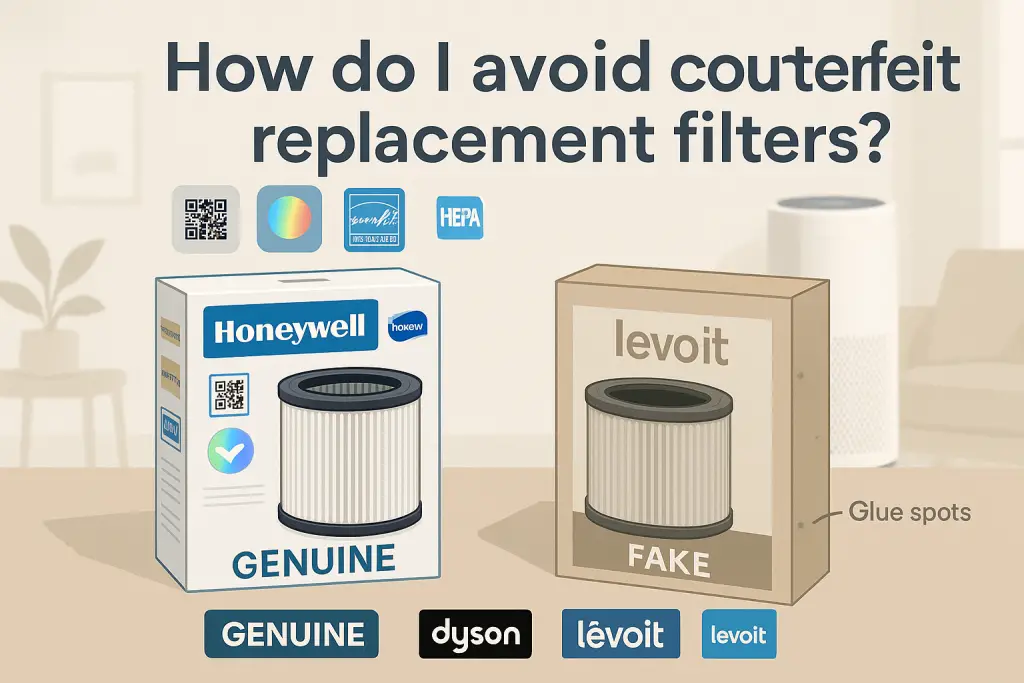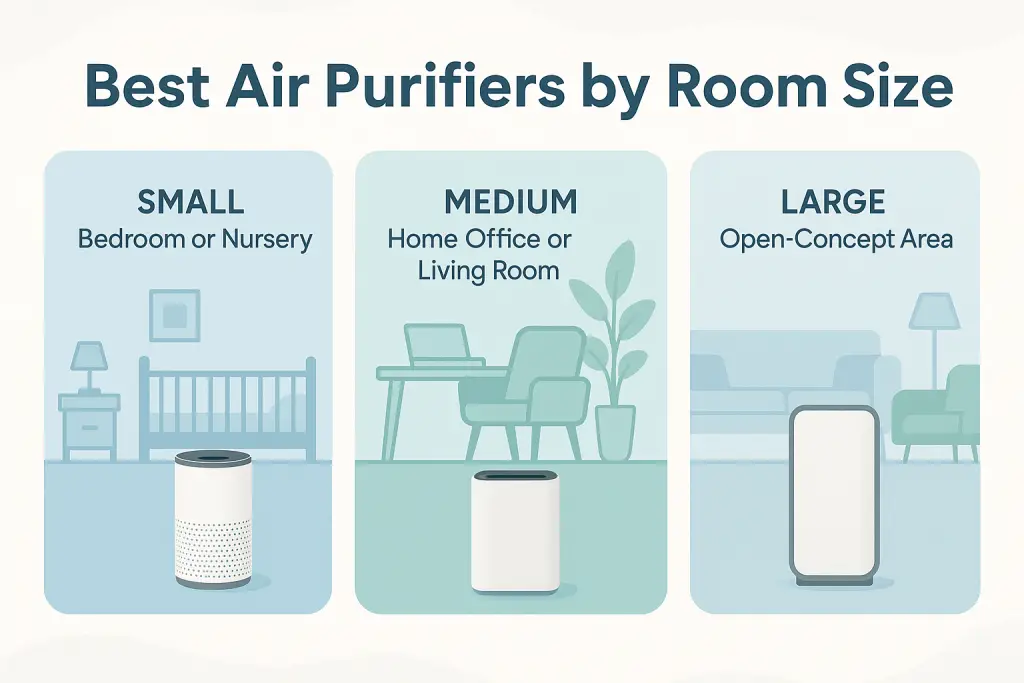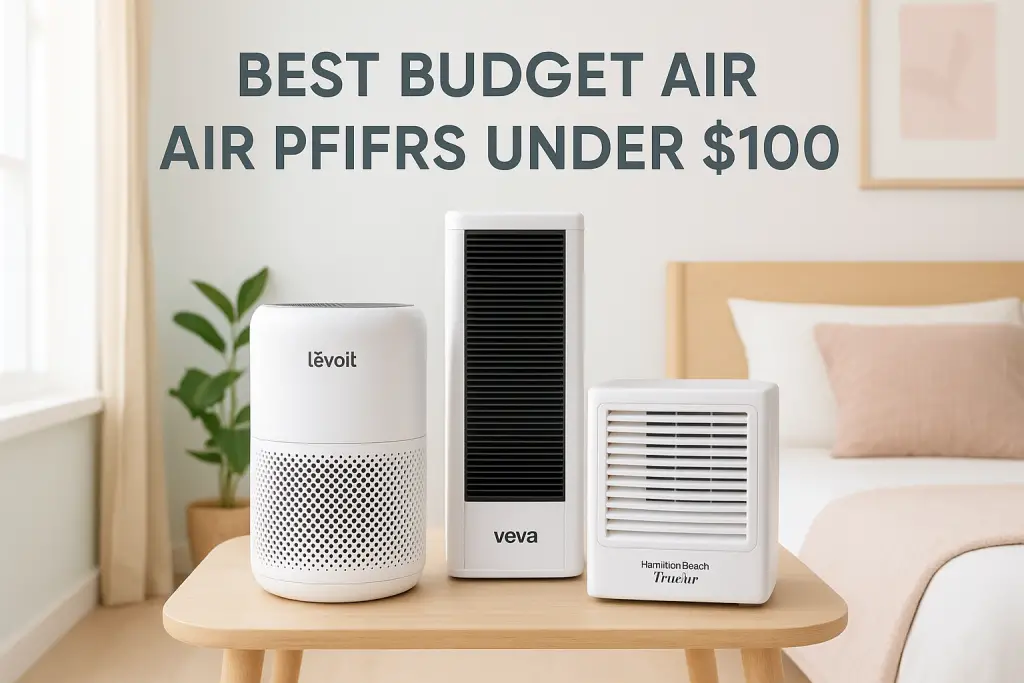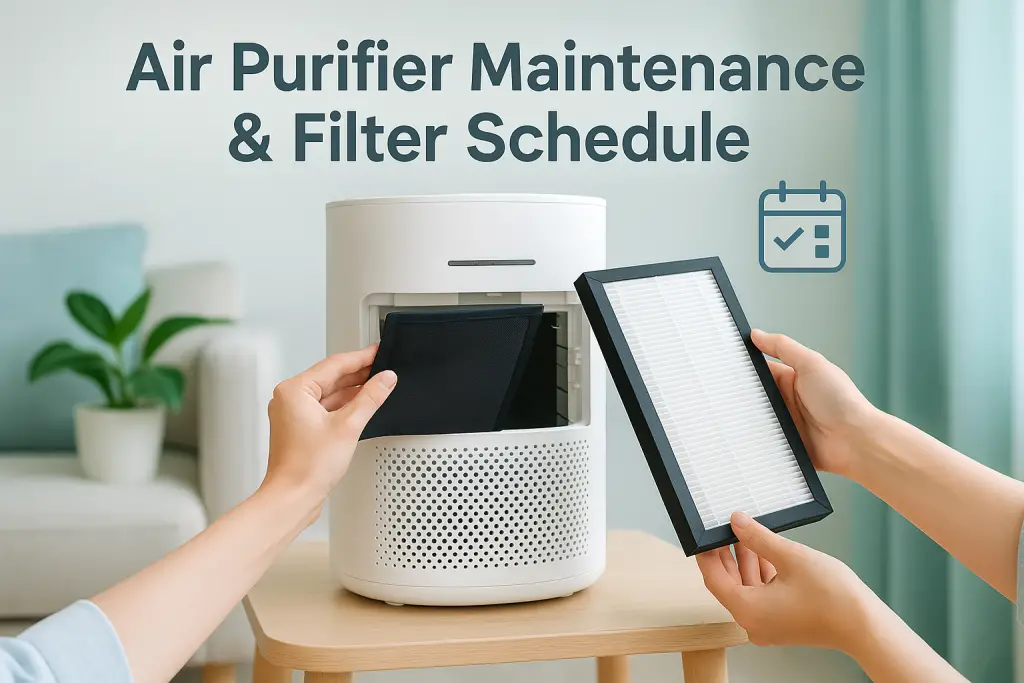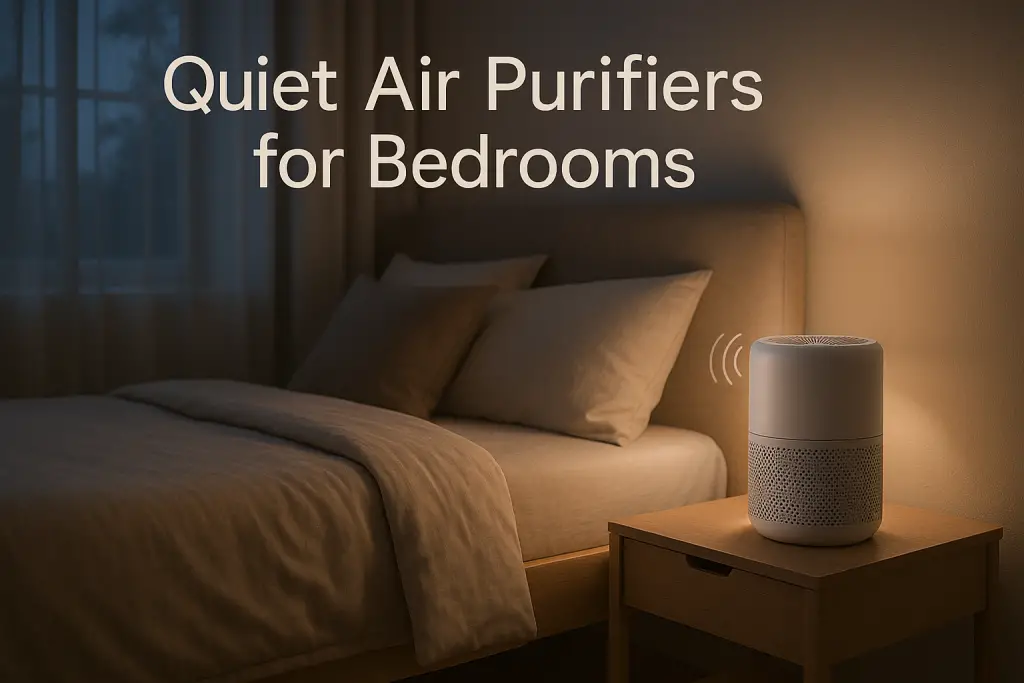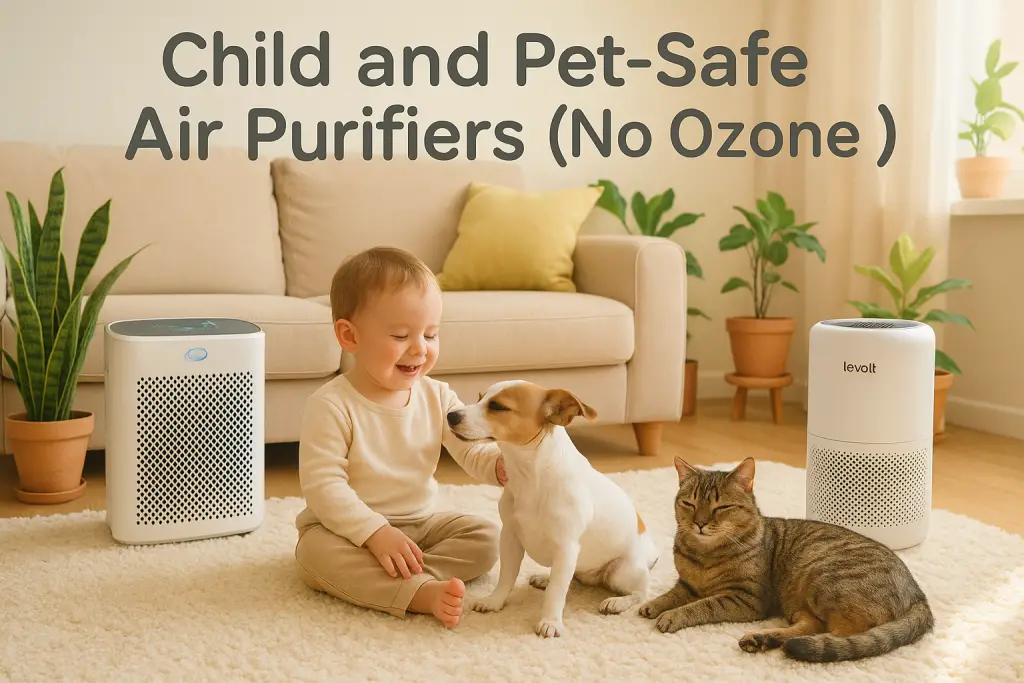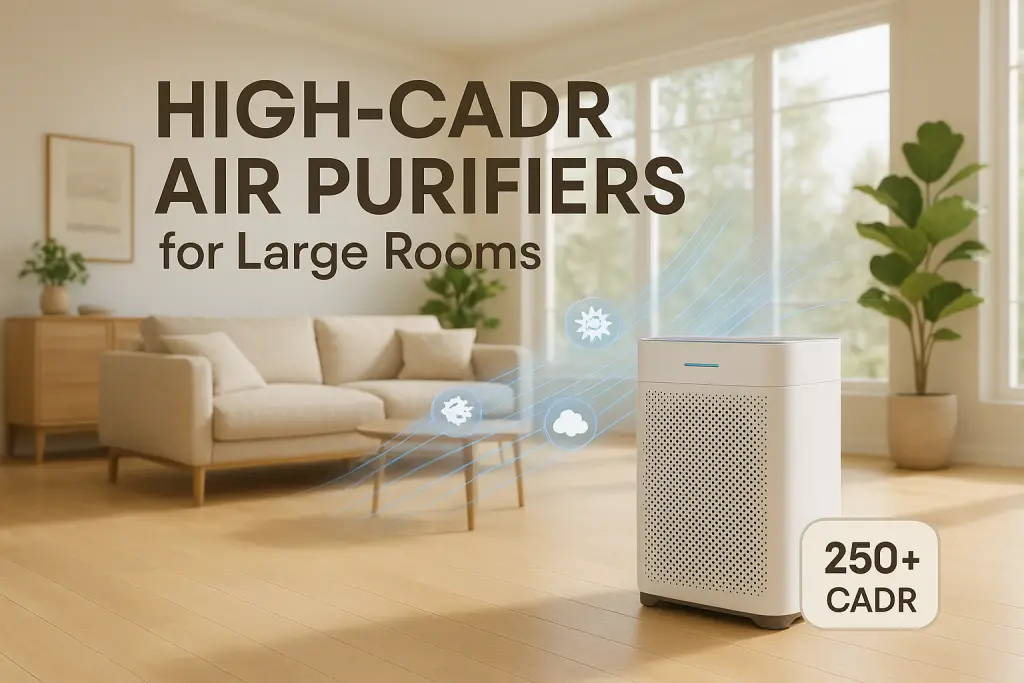Counterfeit air purifier filters have become increasingly common, putting your health and device at risk. These fake filters lack proper filtration materials and construction, reducing air cleaning effectiveness by up to 50%. Learning to identify and avoid counterfeit filters ensures your air purifier works correctly, protects your warranty, and safeguards your respiratory health. This guide provides essential strategies to keep your air clean with genuine replacement filters.
Understanding the Counterfeit Air Filter Market
The counterfeit air filter market has grown into a $3.3 billion global industry, with thousands of American consumers unknowingly purchasing fake products each year. This surge in counterfeits directly impacts those who rely on air purifiers for managing allergies and asthma symptoms, as these fake filters fail to provide adequate protection.
Counterfeit filters typically originate from unauthorized third-party sellers on popular online marketplaces. Unlike legitimate third-party compatible filters that meet industry standards while offering cost savings, counterfeits use inferior materials and skip quality control testing. Studies show these fake filters can reduce air purification performance by 30-70%, depending on the brand being counterfeited.
The health implications are serious. Counterfeit HEPA filters often use basic materials that cannot capture the microscopic particles they claim to filter, leaving allergens, pollutants, and potentially harmful particles in your air. Additionally, these fake filters can damage your purifier’s motor by restricting proper airflow or shedding material into the unit’s mechanical components.
Visual Signs of Counterfeit Air Purifier Filters
Authentic air purifier filters have distinct visual characteristics that counterfeiters often fail to replicate perfectly. Learning to spot these differences is your first line of defense when wondering how do I avoid counterfeit replacement filters.
Genuine filters typically feature high-quality packaging with crisp, clear printing and accurate color matching of brand logos. Counterfeits often show blurry text, slightly off-color logos, or uneven print quality. The weight of authentic filters is consistent and appropriate for the materials used, while fakes may feel unusually light.
Filter construction provides additional clues. Authentic HEPA filters have precisely pleated material with consistent spacing and depth. The filter frame fits perfectly with no gaps or loose areas. Counterfeit versions often show irregular pleating, loose construction, or visible glue spots.
Barcode and serial numbers on legitimate products are clearly printed and follow manufacturer-specific formatting. Many brands also include holographic stickers or security labels that cannot be easily duplicated by counterfeiters.
Common Red Flags in Packaging and Materials
Counterfeiters typically cut corners in specific areas that are easily identifiable once you know what to look for:
- Misaligned printing or low-resolution graphics on packaging
- Incorrect color shades in brand logos (often slightly too bright or too dull)
- Missing or incorrectly placed certification labels (HEPA, CARB, Energy Star)
- Poor-quality plastic wrapping that feels thin or tears easily
- Irregular filter media texture with inconsistent pleating or visible gaps
- Unusual chemical odors from the filter material (genuine filters are typically odorless)
- Spelling errors or awkward phrasing in product descriptions
- Missing instruction leaflets or warranty information
Properly disposing of old filters and keeping their packaging can help you compare with new replacements to spot potential counterfeits.
Brand-Specific Authentication Methods: A Comprehensive Guide
Major air purifier manufacturers have implemented unique authentication features to help consumers verify genuine filters. Here’s a brand-by-brand guide to these verification methods.
Honeywell: Filters include QR codes that link to their verification website. Additionally, look for hologram stickers with color-shifting properties when viewed from different angles. Authentic packaging includes a unique 12-digit code that can be verified through Honeywell’s customer service.
Blueair: Uses a mobile authentication app that scans the security label on filter packaging. Their registration process allows you to register your filter purchase, making future verification easier. Genuine Blueair filters also feature a distinctive textured logo on the filter frame.
Molekule: Incorporates QR code verification that links to their authentication portal. Their packaging includes security features like micro-text printing that blurs when photocopied. The filter itself has a unique identifier engraved on the frame.
Dyson: Features holographic labels with sequential serial numbers. Their verification website allows customers to enter serial numbers to confirm authenticity. Genuine Dyson filters also have specific weight and dimensional tolerances that counterfeits rarely match.
Coway: Uses security codes hidden under scratch-off sections on packaging. Their online verification system confirms legitimate products within seconds. Filter frames include embossed manufacturing dates and lot numbers.
Levoit: Incorporates QR codes linking to their verification portal and requires online registration of new filters. Their packaging includes security threads visible under UV light.
Using Authentication Apps and Online Verification Tools
Many manufacturers now provide digital tools to verify filter authenticity. Here’s how to use these resources effectively.
For QR code verification:
- Locate the QR code on your filter packaging or the filter itself
- Open your smartphone camera or QR scanner app
- Position the camera so the QR code appears in the viewfinder
- Wait for the scan to complete and follow the link
- Enter any additional information requested by the verification page
For code-based verification:
- Find the alphanumeric code on your filter or packaging
- Visit the manufacturer’s verification website
- Enter the code exactly as shown, including any hyphens or special characters
- Review the verification result
Positive verification typically shows a green checkmark with product details matching your purchase. Failed verifications display warnings and often provide reporting options.
Safe Purchasing Strategies by Sales Channel
Where you purchase replacement filters significantly impacts your risk of encountering counterfeits. Different sales channels require different verification strategies to ensure you’re getting genuine products when planning your filter stock for the year.
Manufacturer Direct: Purchasing directly from the manufacturer’s official website or branded store provides the highest security. These channels have direct control over their inventory and rarely experience counterfeit issues. Look for https:// in the URL and verify the domain name matches the official manufacturer.
Authorized Retailers: Major retailers like Home Depot, Lowe’s, Best Buy, and Target typically source directly from manufacturers. Check the manufacturer’s website for their list of authorized sellers before purchasing elsewhere.
Major Marketplaces: When shopping on Amazon, Walmart.com, or similar platforms, verify the seller is either the manufacturer or listed as an authorized retailer. Be cautious of “fulfilled by” items that may come from third-party inventory.
Third-Party Sellers: Independent online stores pose higher risks. Research the seller thoroughly by checking business registration, physical address, and customer reviews across multiple platforms.
Subscription Services: Many manufacturers offer filter subscription programs that deliver verified authentic filters at regular intervals, eliminating the need to search for replacements.
Price comparison is also crucial. If a deal seems too good to be true (typically 30% or more below standard retail), it likely involves counterfeit products. Legitimate sales rarely exceed 25% off, even during major shopping events.
Marketplace-Specific Verification Tips (Amazon, eBay, Walmart)
Major online marketplaces have different policies and seller verification systems. Understanding these can help you avoid counterfeits when shopping online.
- Amazon: Look for “Ships from and sold by Amazon.com” or products sold by the official brand store. “Amazon’s Choice” is not a guarantee of authenticity. Check the “New & Used” sellers section to verify who’s actually fulfilling your order.
- eBay: Review seller ratings, focusing on those with 99%+ positive feedback and extensive selling history (1,000+ transactions). Use eBay’s Money Back Guarantee for protection, and be wary of listings showing stock photos only.
- Walmart: Items sold by Walmart directly are safer than Walmart Marketplace items from third parties. Check the seller name under the “Sold by” section of the product page.
When reading reviews, search specifically for terms like “fake,” “counterfeit,” or “not genuine” to identify potential problems. Recent reviews (within the last 3 months) are more reliable than older feedback, as sellers may have changed suppliers.
The Performance Impact of Counterfeit Filters: What the Data Shows
Counterfeit filters don’t just look different. Laboratory testing shows they perform significantly worse in key filtration metrics that directly impact your health.
Testing by the National Air Filtration Association found counterfeit HEPA filters typically capture only 20-60% of particles 0.3 microns in size, compared to the 99.97% capture rate of genuine HEPA filters. This massive performance gap means counterfeit filters allow 40-80% more pollutants to remain in your air.
Lifespan testing reveals counterfeits typically last only 30-50% as long as authentic filters before clogging. This happens because fake filters use less filter media surface area and lower-quality materials that quickly become saturated.
The impact on air purifier performance is substantial. Units running with counterfeit filters show reduced Clean Air Delivery Rate (CADR) values, sometimes by more than 60%. This means your air purifier works harder but cleans less effectively.
Long-term use of counterfeit filters can damage your air purifier. Motor strain from improper airflow can lead to overheating, reduced lifespan, and potential safety hazards. Some counterfeit filters shed fibers that can contaminate the internal components.
Knowing where to place your air purifier for best results won’t matter if your filters aren’t genuine, as performance will be compromised regardless of placement.
DIY Verification Methods: Testing Your Filter’s Performance
If you suspect your filter might be counterfeit, these at-home testing methods can help assess its performance, though they don’t replace professional testing.
Visual Inspection Test: In a dark room, hold a flashlight behind the filter. Genuine HEPA filters allow minimal light to pass through, with even distribution. Counterfeits often show uneven light patterns or excessive light transmission.
Water Test (for hydrophobic filters): Some filters, particularly those with water-resistant properties, can be tested by placing a few drops of water on the surface. Authentic filters cause water to bead up and not penetrate, while counterfeits often absorb water quickly.
Airflow Testing: Hold the filter up to a fan or air vent. Genuine filters create noticeable resistance but allow steady airflow. Counterfeits might have either too little resistance (indicating poor filtration) or excessive resistance (indicating improper materials).
Odor Elimination Test: For activated carbon filters, place the filter in a closed container with a strong odor source for 30 minutes. Genuine carbon filters should significantly reduce the odor; counterfeits will show minimal odor reduction.
These tests have limitations and provide indications rather than definitive proof. For absolute certainty, some manufacturers offer verification services for suspicious products.
Legal Rights and Reporting Counterfeit Filters
If you’ve purchased a counterfeit filter, you have legal rights and reporting options that can help protect other consumers and hold sellers accountable.
Under consumer protection laws, you’re entitled to refunds for counterfeit products, regardless of the seller’s stated return policy. The Magnuson-Moss Warranty Act and state consumer protection laws provide additional safeguards against fraudulent goods.
For marketplace purchases, start by filing a claim directly through the platform:
- Amazon: Use the A-to-Z Guarantee claim process, specifically citing “counterfeit item”
- eBay: Open a “Not as Described” case through their resolution center
- Walmart: File a complaint through their customer service portal
Beyond seeking a refund, report counterfeits to:
- The manufacturer (most have dedicated anti-counterfeit reporting channels)
- The Federal Trade Commission via their online complaint form
- The Consumer Product Safety Commission if there are safety concerns
- The FBI’s Intellectual Property Rights Center for significant cases
When filing reports, include purchase details, photos of the counterfeit product, seller information, and any communication with the seller. These reports help authorities identify and shut down counterfeit operations.
Warranty Implications: How Counterfeit Filters Affect Your Air Purifier
Many consumers don’t realize that using counterfeit filters can void their air purifier warranty, creating additional financial risk beyond the initial purchase.
Major manufacturers like Dyson, Honeywell, and Blueair explicitly state in their warranty terms that damage caused by non-authorized replacement parts isn’t covered. This means if your air purifier malfunctions after using a counterfeit filter, repair costs come out of your pocket.
Manufacturers can detect unauthorized filter use through several methods. Modern air purifiers often have sensors that detect irregular airflow patterns typical of counterfeit filters. Some brands include electronic chips in their filters that the purifier can verify. During warranty service, technicians are trained to identify damage patterns consistent with counterfeit filter usage.
Importantly, most manufacturers distinguish between counterfeit filters and legitimate third-party compatible filters. Many warranties allow use of compatible filters that meet proper specifications, but specifically exclude counterfeits claiming to be original brand products.
To protect your warranty, keep receipts for all filter purchases, register products and filters when possible, and document any communication with sellers about authenticity concerns.
Future Authentication Technologies and Industry Initiatives
The air purification industry is responding to the counterfeit problem with advanced authentication technologies that make verification easier and counterfeiting harder.
Blockchain verification is emerging as a promising solution, creating unalterable digital records of authentic products from manufacturing through distribution. Several major manufacturers are piloting blockchain systems that allow consumers to trace a filter’s entire history.
NFC (Near-Field Communication) and RFID chips embedded in filter frames or packaging enable instant verification through smartphone taps. Unlike QR codes, these chips cannot be easily replicated and provide encrypted authentication data.
Smart air purifiers with connectivity features can automatically verify filter authenticity upon installation. These systems can alert users to potential counterfeits and provide direct links to report suspicious products.
Industry associations like the Association of Home Appliance Manufacturers (AHAM) and the National Air Filtration Association (NAFA) have launched certification programs and consumer education campaigns. These initiatives include standardized testing protocols for filter performance and authentication guidelines for manufacturers.
Understanding how often to replace your HEPA and carbon filters with genuine products is essential for maintaining optimal air quality.
How Do I Avoid Counterfeit Replacement Filters? Your Prevention Checklist
Use this simple checklist to protect yourself from counterfeit air purifier filters and ensure your air purification system performs as intended:
- Purchase directly from manufacturers or authorized retailers listed on the official website.
- Be suspicious of deep discounts exceeding 30% off standard retail pricing.
- Verify seller reputation through ratings, reviews, and business history before purchasing.
- Check packaging quality for clear printing, correct colors, and proper security features.
- Use manufacturer verification tools like QR codes, apps, or online serial number checks.
- Compare new filters with previously purchased genuine filters for consistency.
- Register products and filters when the manufacturer offers this option.
- Know proper pricing for your specific model’s replacement filters.
- Consider subscription services from the manufacturer for automatic, verified replacements.
- Inspect filter construction for consistent pleating, secure frame, and proper materials.
Following these guidelines helps ensure your air purifier’s filters, including pre-filters, work as designed to keep your indoor air clean and healthy. For those concerned about air quality while traveling, similar verification methods apply to vehicle cabin air filters as well.
By staying vigilant and following these verification methods, you can avoid the health risks, performance issues, and financial waste that come with counterfeit air purifier filters.
| Photo | Air Purifier Model | Best for | Price |
|---|---|---|---|

|
WINIX A231 Air Purifier | Asthma & Indoor Pollution | Check Price On Amazon |

|
Rabbit Air, A3 SPA-1000N Air Purifier | Pet Dander & Odors | Check Price On Amazon |

|
LEVOIT Air Purifier | Best Overall | Check Price On Amazon |

|
GermGuardian Air Purifier | Cigarette & Cooking Smoke | Check Price On Amazon |

|
Coway Airmega Air Purifier | New-borns | Check Price On Amazon |

|
BLUEAIR Air Purifier | Germ & Virus Control | Check Price On Amazon |
